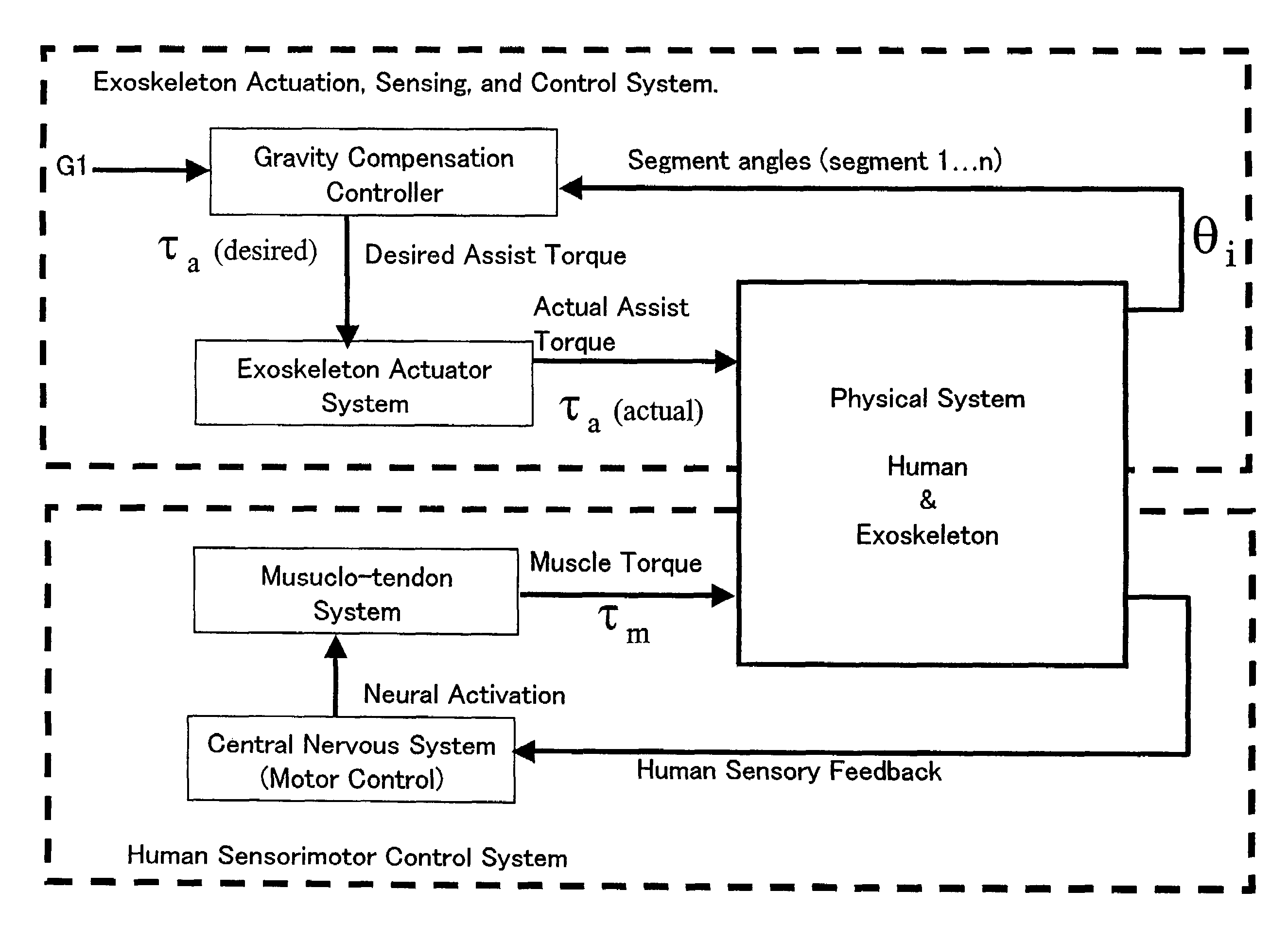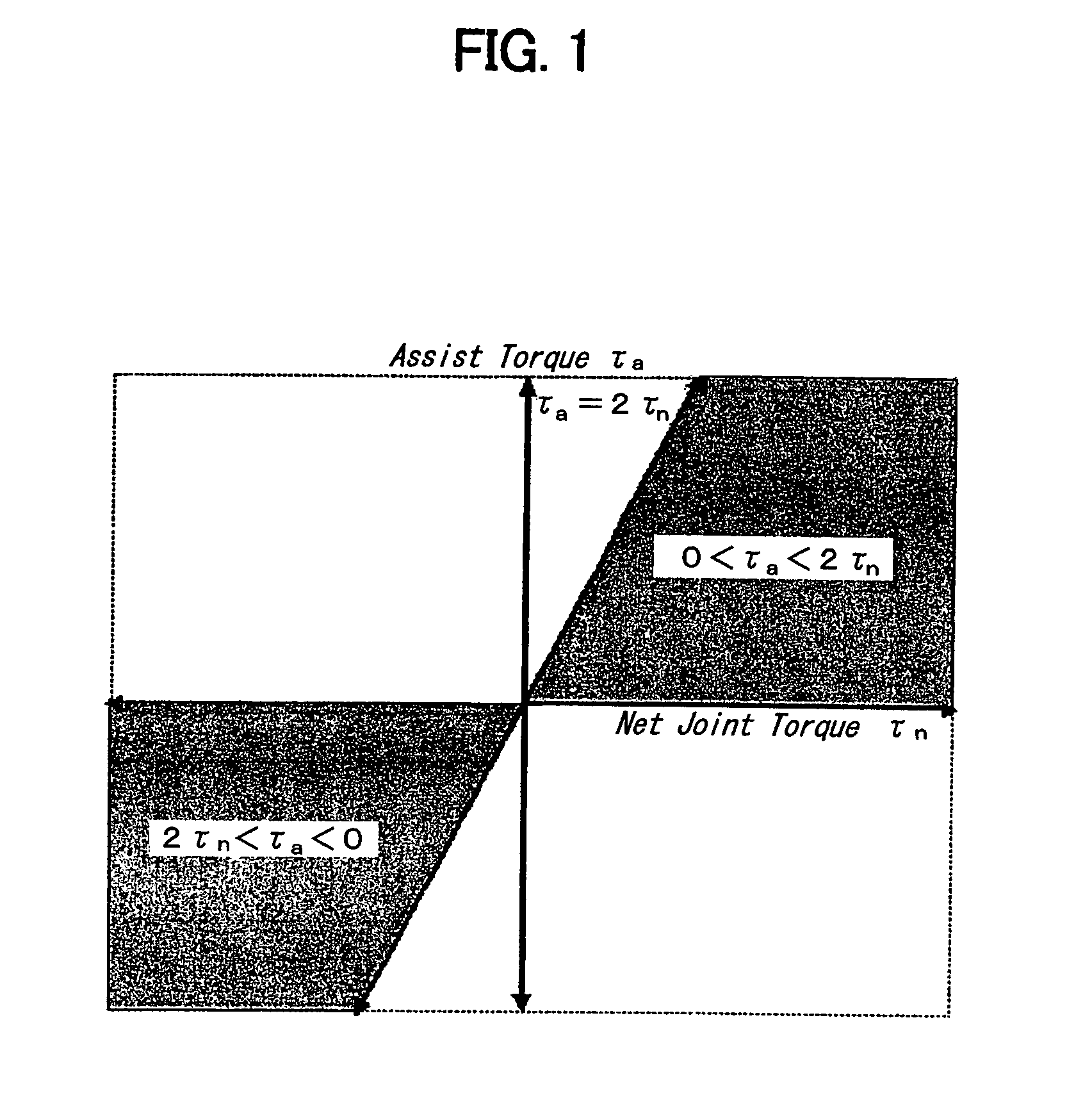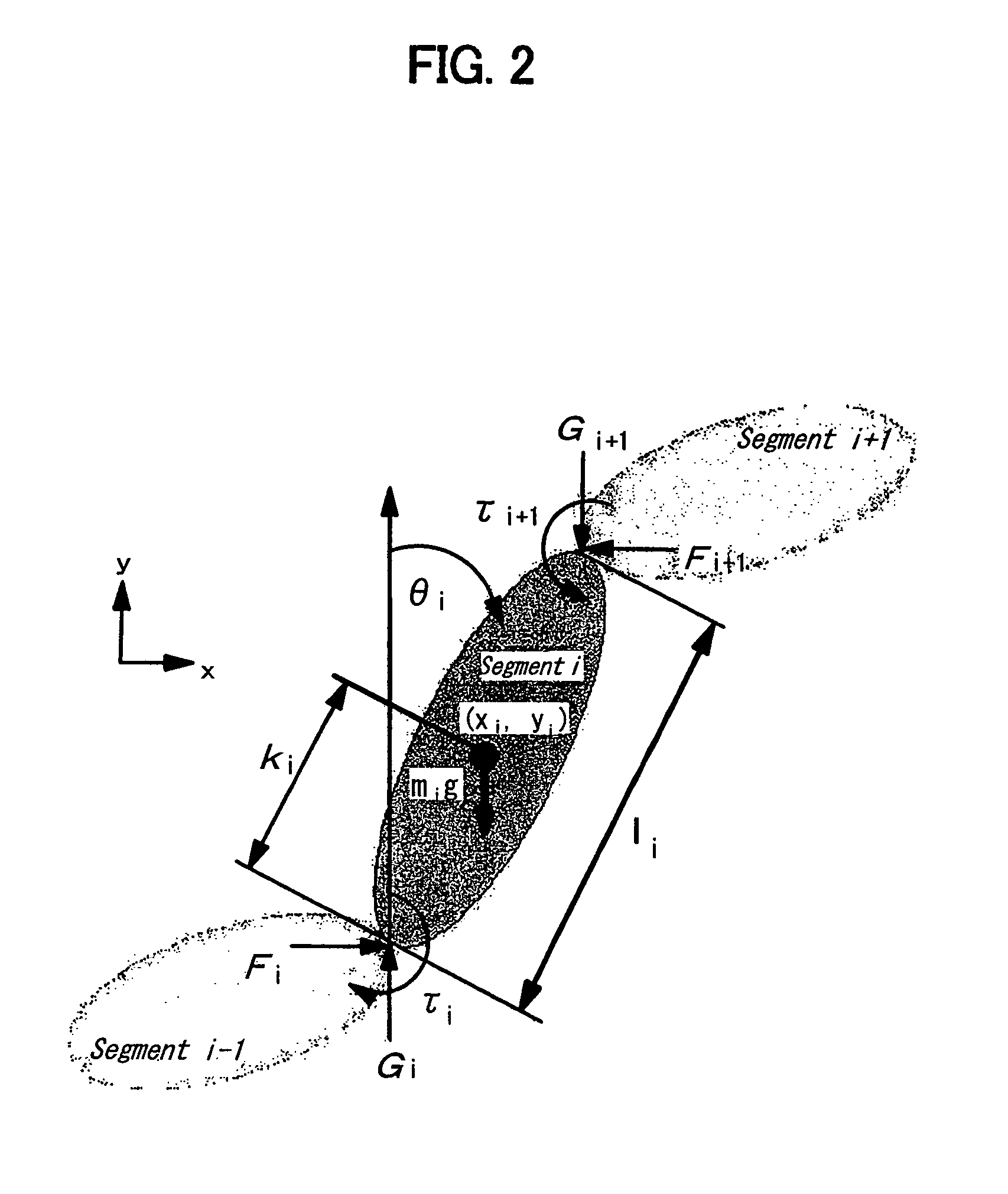Human assist system using gravity compensation control system and method using multiple feasibility parameters
a technology of gravity compensation and control system, applied in the field of human assist system, can solve the problems of complex control system of central nervous system, unanswered questions, control problems, etc., and achieve the effect of reducing the interface between voluntary control and external artificial control
- Summary
- Abstract
- Description
- Claims
- Application Information
AI Technical Summary
Benefits of technology
Problems solved by technology
Method used
Image
Examples
Embodiment Construction
[0022]Human exoskeletons are structures of rigid links mounted on the body that promise to enable normal humans to perform their daily activities with less effort. A major limitation of the practical use of exoskeletons for daily activities relate to the control problem. The complexity of the central nervous system (CNS) control and the interface between voluntary control and external artificial control are challenging, unanswered questions. In this specification, we present a novel method for partitioning the mechanism between voluntary control and artificial control by the concept of relegation of control. In particular, the control of humans equipped with an augmentation device (human assist system) is relegated to two subsystems: motion generation and gravity compensation. The motion generation subsystem represents execution of voluntary motion from commands generated from the central nervous system. This subsystem describes the kinetic energy of the motion. The gravity compensa...
PUM
 Login to View More
Login to View More Abstract
Description
Claims
Application Information
 Login to View More
Login to View More - R&D
- Intellectual Property
- Life Sciences
- Materials
- Tech Scout
- Unparalleled Data Quality
- Higher Quality Content
- 60% Fewer Hallucinations
Browse by: Latest US Patents, China's latest patents, Technical Efficacy Thesaurus, Application Domain, Technology Topic, Popular Technical Reports.
© 2025 PatSnap. All rights reserved.Legal|Privacy policy|Modern Slavery Act Transparency Statement|Sitemap|About US| Contact US: help@patsnap.com



